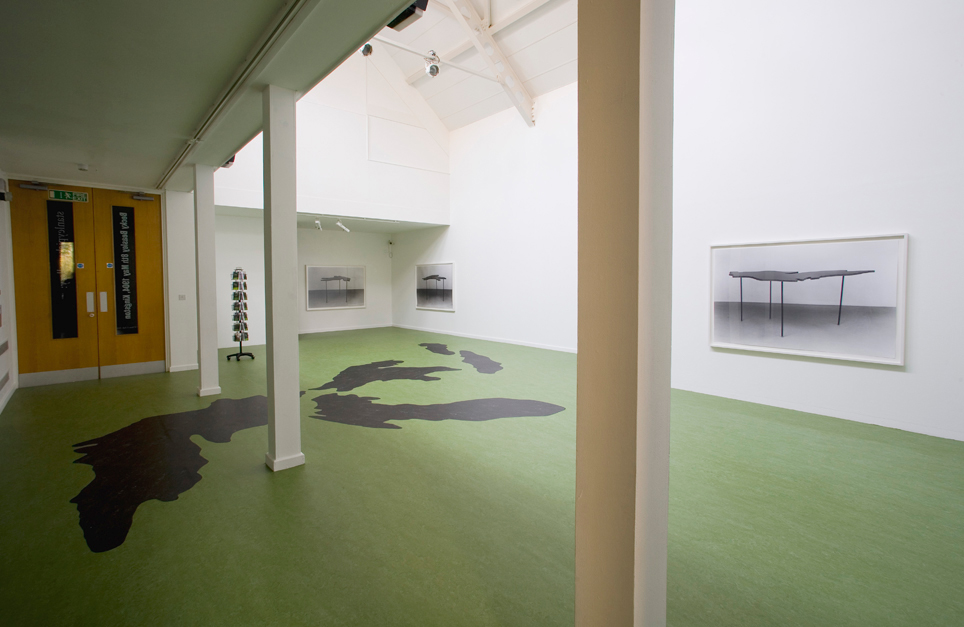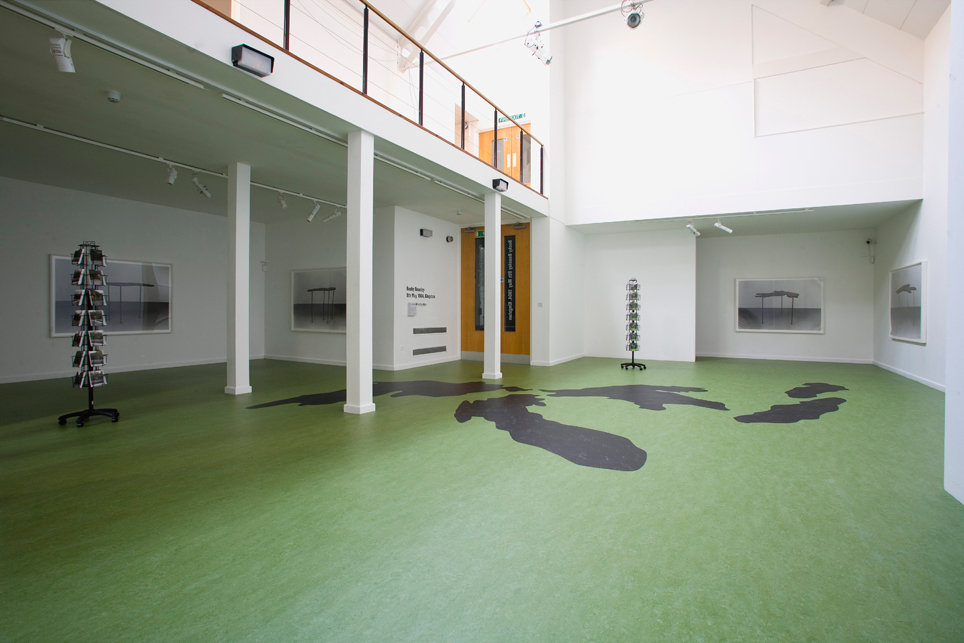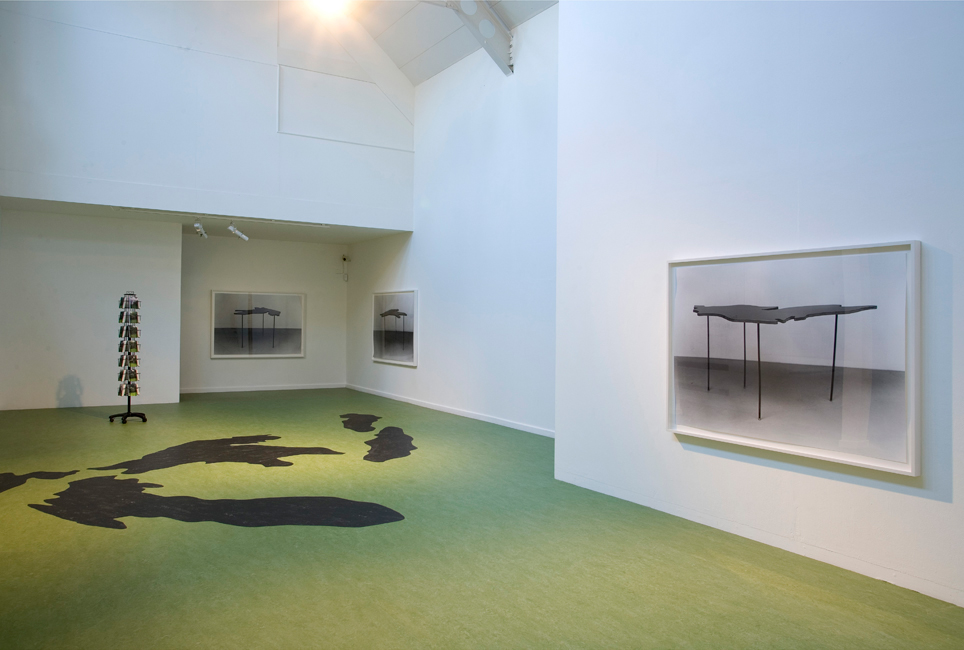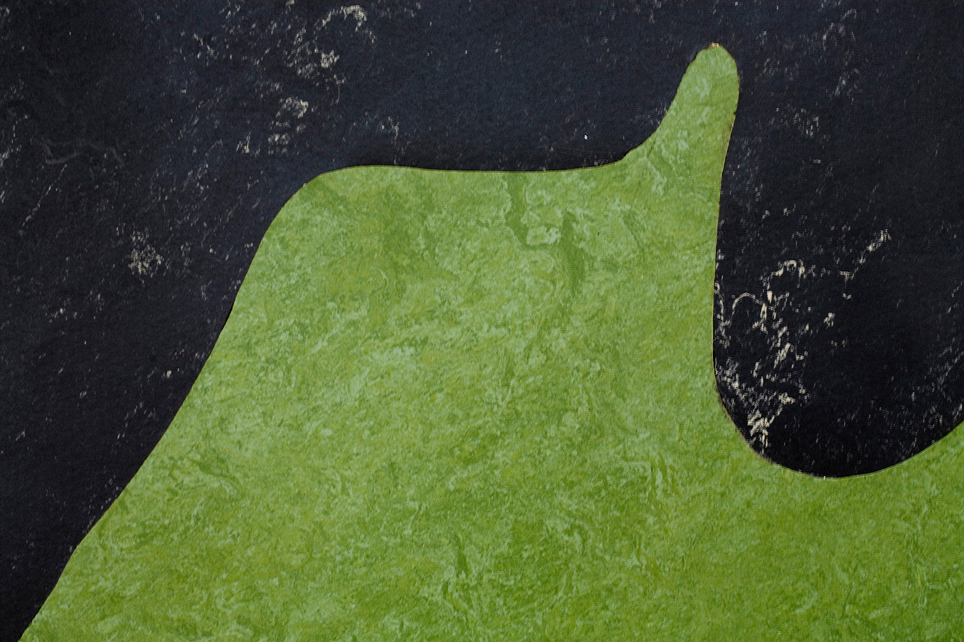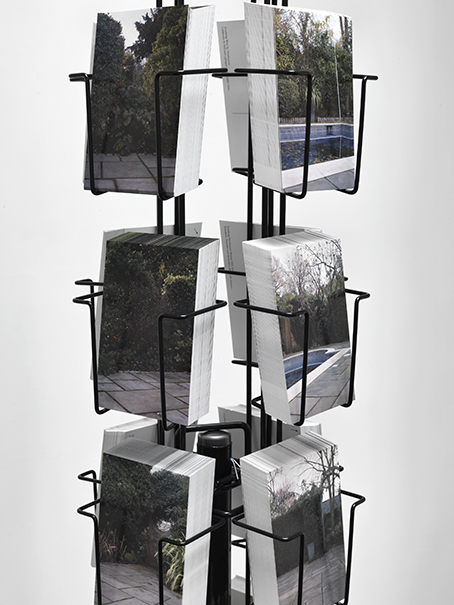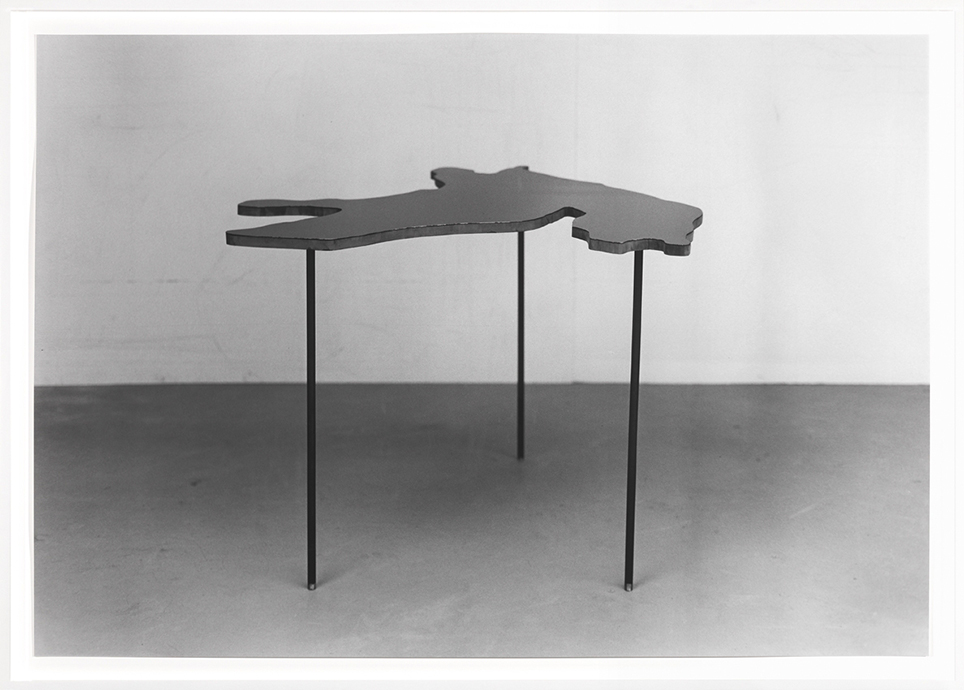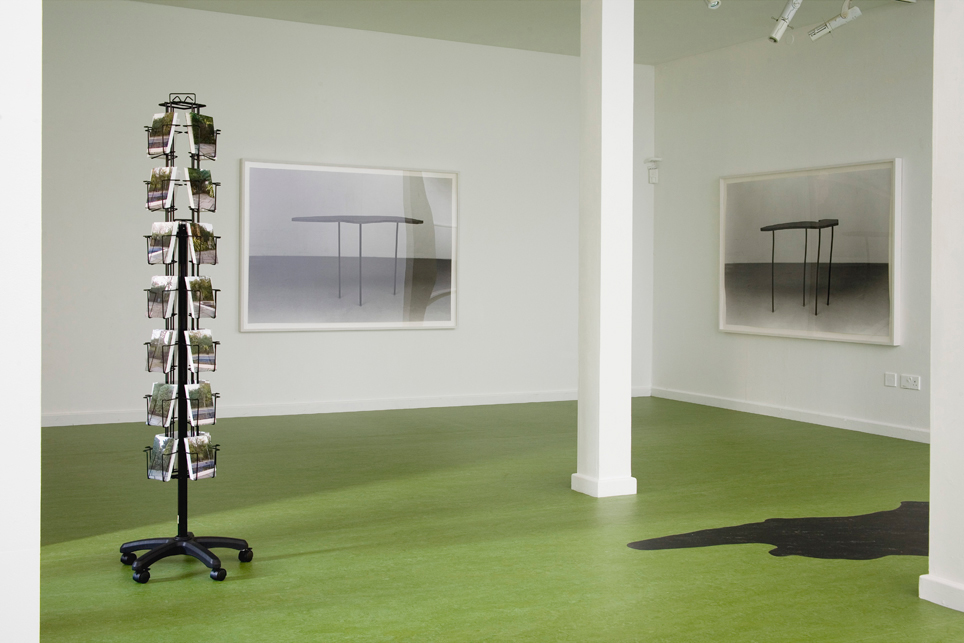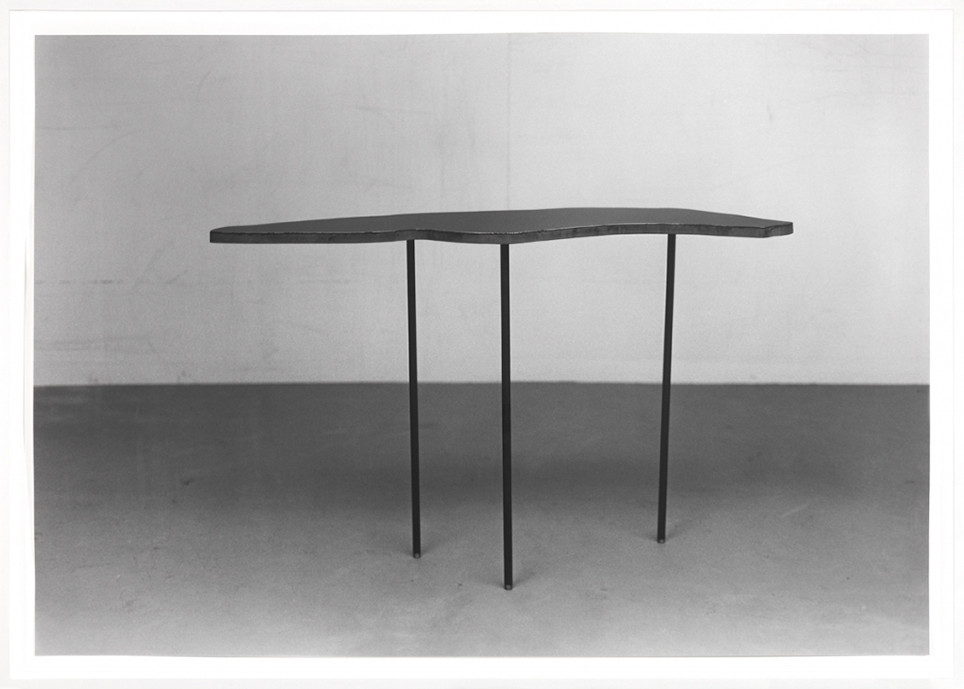There is an undeniable irony in dropping dead while digging a hole in the ground. Over the course of more than a year, artist Becky Beasley visited Kingston Museum archives to research some of the many ambiguities in Victorian photographic pioneer Eadweard Muybridge’s life story. The resulting exhibition reflects upon the end of Muybridge’s life in Kingston upon Thames, after his epic experiences in the American West.
Beasley was particularly drawn to references by biographers that, at the time of his death, Muybridge was said to be variously drawing, planning, digging or constructing a scale model of the American Great Lakes in his back garden in Kingston; a story befitting the image of Muybridge as a man of eccentric nature who, even in retirement, instilled the genteel pursuit of gardening with visionary gusto. In the course of her search for the source of the story, the artist arranged to visit the privately owned garden in Liverpool Road, Kingston. Once there, she undertook a photographic panorama of the domestic space as she found it, directly referencing both the technique and format of Muybridge’s own ambitious 1878 panorama of San Franscisco; a rare copy of which is held at Kingston Museum.
The new panorama of Muybridge’s garden is displayed as individual colour postcards on a revolving unit normally used for selling holiday souvenirs. Her document of the garden is presented in this way as a series of removable fragments, viewed by manually rotating the apparatus; inversely emulating the operation of her camera as it recorded the images presented.
Exploring the epic and domestic dimensions of the Muybridge garden myth, a silhouette of the American Great Lakes is laid into the floor of the gallery. Cut from linoleum – invented in 1855 by fellow Victorian Frederick Walton in nearby Staines – the gallery floor becomes a graphic representation and minimal re-enactment of the garden as Muybridge might have conceived it, as well as a vast visual landscape mapping the geography of the exhibition space. Completing the exhibition is a series of large, gelatin-silver prints of black, tabular objects. The linoleum floor templates were re-scaled here to design the metal tabletops. The objects were each rotated in front of a camera to produce distinct views. The aerial view that dominates the linoleum floor is gradually turned into an oblique vision from elsewhere; the decorative shapes calling to mind floral motives, smoke or islands.
Beasley’s visits to the Museum archives and to Muybridge’s garden have fuelled a narrative fantasy about his last sculptural project, allowing her to pair a fiction about him – his gardening project and his death – with a meditation on photography itself. The biographical tale and the reflection on the medium unfold as parallel stories, overlapping not only on a symbolic level, but also through analogies between technical manipulations, such as scale and projection, wetness and photography, the figure and the ground.
The combined elements of Beasley’s exhibition act as a form of eulogy or memorial to Muybridge the man, to his phenomenal career and to the myth of his final great project; the date of his death signifying, in the exhibition title, both the end of his life’s adventures, and the moment his private collection first became public property through his bequest to the town in which he was originally born.
Eadweard Muybridge (Kingston upon Thames 1830-1904) was one of the World’s most innovative photographic pioneers, whose studies of humans and animals in motion played a critical role in the history of photography and the moving image. Muybridge in Kingston is an exciting partnership between Kingston University and the Royal Borough of Kingston that is celebrating and investigating the Kingston Museum Muybridge Bequest. As part of a special programme of exhibitions and events accompanying the first major UK retrospective of Muybridge’s career at Tate Britain, the Stanley Picker Gallery is celebrating his achievements through the eyes of two contemporary artists, Trevor Appleson and Becky Beasley, providing us with 21st Century perspectives on the Museum’s world-class collection.
Becky Beasley is represented by Laura Bartlett Gallery, London and Office Baroque Gallery, Antwerp. Short-listed for the Max Mara Art Prize for Women 2009-11, her work is currently showcased in British Art Show 7. Beasley’s performance lecture in collaboration with the writer Chris Sharp, entitled 13 Pieces, 17 Feet and inspired by Muybridge’s 1878 Panorama of San Francisco, formed part of the events programme of the 10th Serpentine Gallery Summer Pavilion, leading up to her current commission for Muybridge in Kingston.

